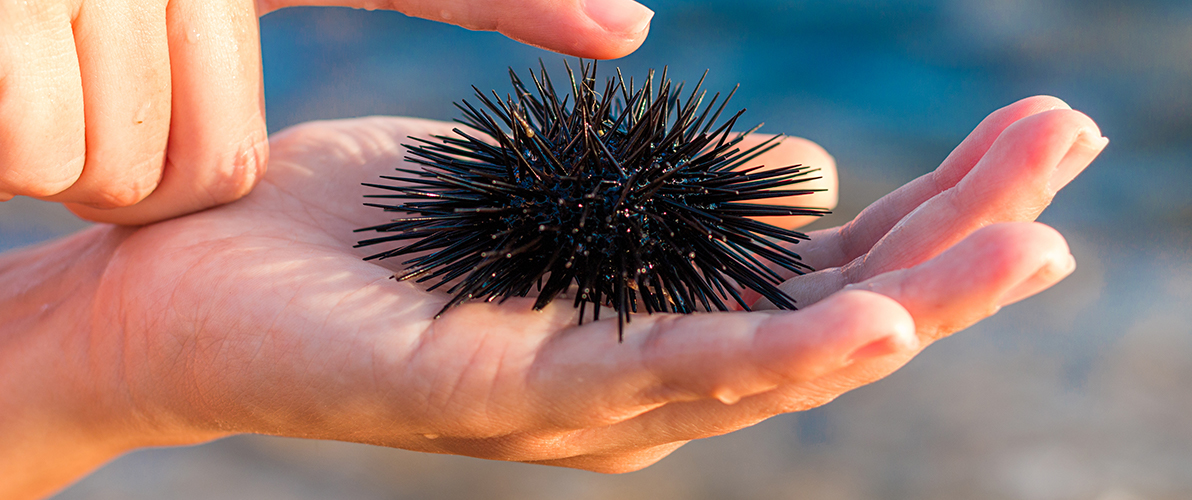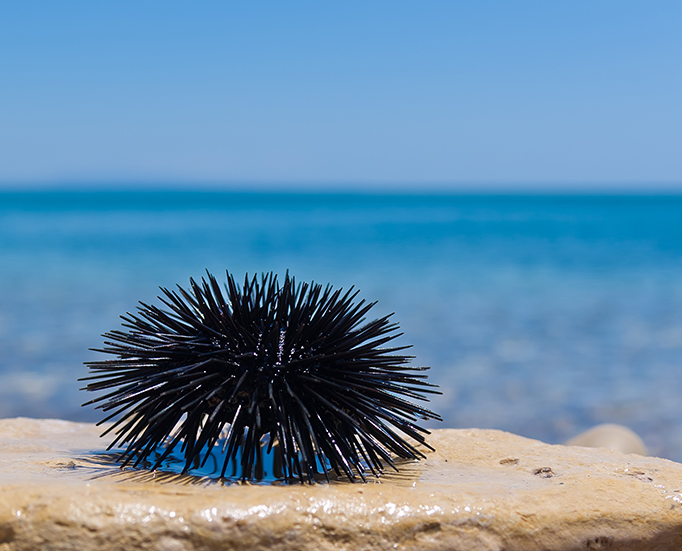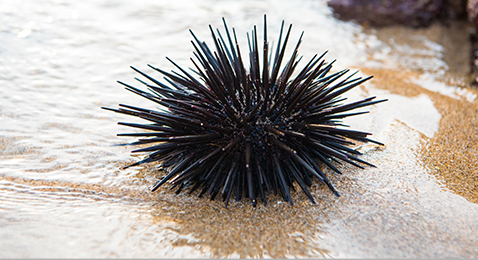ABOUT
CLYPEASTER

Echinodermata of Class Echinoidea belonging to Subphylum Echinozoa
CLYPEASTER
The sea urchin is a strange-looking seafood nicknamed Aristotle's Lantern.
The sea urchin is a kind close to starfish and belongs to echinodermata.
It is shaped like a round or a disk about 5cm in diameter, and has a lot of spines on the surface, making it look like a chestnut.
There are many white threadlike feet between thorns, which move easily and prey on them.
Usually there is a mouth in the middle of the abdomen and an anus in the middle of the back, and there is a tender and delicious ovary in the hard shell.
The ovaries mature from May to August.
Since ovaries have 71% water and are prone to decay quickly, processed with [Salted sea urchin] are usually in circulation.
[Salted sea urchin] Sprinkle 20 to 50 percent salt on the ovaries to dehydrate them sufficiently, then add the dehydrated ones into the blender as ingredients to mix sugar, alcohol, and chemical condiments and mix them together. High in protein, vitamins A, B, and iron are characteristic. -It's good for drinking and Salted sea urchin is also good as a side dish of rice because there are many ingredients that are lacking in rice. It is a food that I would recommend for people with anemia or cold bodies.
But eating too much at once can make you sick. This is because of the risorecitin contained in sea urchin. This lysorecithin is a toxic component of the solubility of the blood cells. But it doesn't matter much because the content is small. Wash raw sea urchin ovary with soju or alcohol and let the water go away and put it in a fermenting can. Mix 1.8L of ovary with about 0.5kg of salt. The salt used here is recommended to use a refinished salt. Sea urchin products are better if they have a strong scent, which is characterized by a slightly reddish yellow color. The word 'undan' is a Japanese name.

Echinodermata of Class Echinoidea belonging to Subphylum Echinozoa
Bahun sea urchin, Murasaki sea urchin
Bahun sea urchin and Murasaki sea urchin are representative sea urchin that live in Korea and can be eaten. When I see Bahun sea urchin, it looks like a chestnut or a horse poop, and the thorn is about 5 to 6mm long. And it is being treated as the best sea urchin for its excellent taste and flavor, and is being exported to Japan at high prices. It usually produces a lot of sexual gland in the winter months from January to March.
Murasaki sea urchin has a hemispherical shell with sharp, strong spines. Murasaki sea urchin is widely found in Korea between the intertidal zone of the deep sea and the rocks 70 meters deep, and is a period of scattering between August and October.

Echinodermata of Class Echinoidea belonging to Subphylum Echinozoa
a sea urchin's thorn
Sea urchins are known to eat mostly algae. In areas where sea urchins thrive, algae are also devastated. When there is no other food, such as seaweeds, they also eat animal plankton. Sea urchins protect the body with hedgehog-like thorns and venom, but there are many animals that feed on sea urchins.
